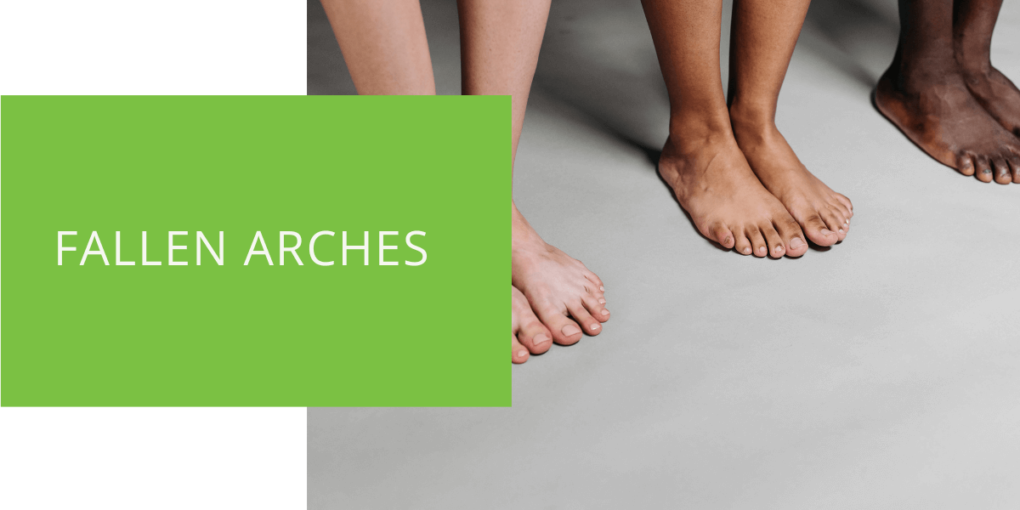Fallen Arches: Causes, Symptoms & Treatment
Fallen arches, also known as flat feet, is a condition in which the arch collapses, causing the entire sole to come into contact with the ground. This can cause pain and discomfort and make it difficult to walk or stand for long periods. This article will explore the causes, symptoms, treatment options for fallen arches, and ways to prevent the condition from developing.
Causes of Fallen Arches
Several factors can contribute to the development of fallen arches. Some of the most common causes include:
- Genetics: Some people are predisposed to flat feet due to their family history.
- Weight and obesity: Extra weight can strain the feet, leading to fallen arches.
- Age: As we age, the tendons and ligaments that support the foot arch can become weak, causing the arch to collapse.
- Pregnancy: The weight gain and hormonal changes that occur during pregnancy can cause the arch of the foot to collapse.
- Certain medical conditions: Conditions such as rheumatoid arthritis, diabetes, and nerve disorders can affect the muscles and tendons in the feet, leading to fallen arches.

Symptoms of Fallen Arches
If you have fallen arches, you may experience the following symptoms:
- Flat feet: The most obvious symptom of fallen arches is a flat appearance of the feet when standing.
- Foot pain, especially in the heel or arch: The collapsing arch can put extra pressure on the heel and ankle, causing pain.
- Swelling in the feet and ankles: The added strain on the foot can cause inflammation and swelling.
- Difficulty standing on tiptoes: Flat feet can make it difficult to stand on your toes.
- Inability to walk or stand for long periods: The pain and discomfort associated with fallen arches can make it difficult to stay on your feet.
Treatment Options
There are both non-surgical and surgical treatment options available for fallen arches.
Non-surgical treatment options include:
- Orthotics: Custom-made shoe inserts, called orthotics, can help support the arch of the foot and alleviate pain.
- Physical therapy: Exercises to stretch and strengthen the feet muscles can help support the arch and reduce pain.
- Stretching and strengthening exercises: specific exercises to target the muscles in the feet and ankle can help support the arch and alleviate pain.
Surgical treatment options include:
- Tendon and ligament repair: In severe cases of fallen arches, surgery may be required to repair or reposition tendons and ligaments in the foot.
- Bone realignment: In some cases, the foot bones may be repositioned to correct a fallen arch.

Prevention
To prevent fallen arches from developing, it is important to maintain a healthy weight, wear supportive shoes, and do stretching and strengthening exercises for your feet. It is also important to have regular check-ups with a podiatrist, especially if you have a family history of flat feet or are experiencing pain or discomfort in your feet.
Conclusion
Fallen arches, also known as flat feet, are common conditions that can cause pain and discomfort. Understanding the causes, symptoms, and treatment options is important for managing and preventing this condition. Non-surgical treatment options such as orthotics, physical therapy, and stretching and strengthening exercises can effectively alleviate pain, while surgical options may be necessary for severe cases. Regular check-ups with a podiatrist, maintaining a healthy weight, and wearing supportive shoes can also help prevent fallen arches from developing. If you are experiencing symptoms of fallen arches, it is important to seek the advice of a podiatrist.
FAQ
Can fallen arches be corrected?
Fallen arches, also known as flat feet, can be corrected through treatments, including orthotics, physical therapy, and stretching and strengthening exercises. In severe cases, surgery may be required to repair or reposition tendons and ligaments or realign bones in the foot.
What causes the foot arch to drop?
The foot arch can drop due to various factors, including genetics, weight and obesity, age, pregnancy, and certain medical conditions such as rheumatoid arthritis, diabetes, and nerve disorders.
What is the cure for fallen arches?
There is no one specific cure for fallen arches. Still, a combination of treatments, including orthotics, physical therapy, and stretching and strengthening exercises, can help alleviate pain and improve the condition. In severe cases, surgery may be necessary to repair or reposition tendons and ligaments or realign bones in the foot.
What is the most common cause of fallen arches?
The most common cause of fallen arches is genetics. Some people are predisposed to flat feet due to their family history. Other common causes include weight and obesity, age, pregnancy, and certain medical conditions such as rheumatoid arthritis, diabetes, and nerve disorders.

